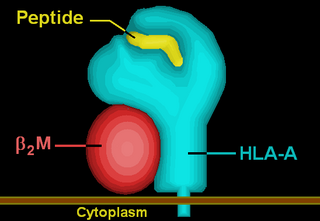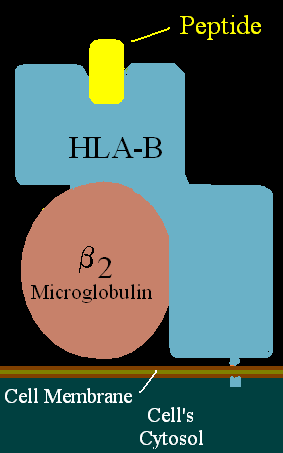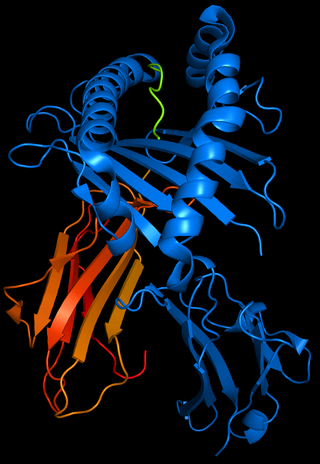
Carbamazepine, sold under the brand name Tegretol among others, is an anticonvulsant medication used in the treatment of epilepsy and neuropathic pain. It is used as an adjunctive treatment in schizophrenia along with other medications and as a second-line agent in bipolar disorder. Carbamazepine appears to work as well as phenytoin and valproate for focal and generalized seizures. It is not effective for absence or myoclonic seizures.
Stevens–Johnson syndrome (SJS) is a type of severe skin reaction. Together with toxic epidermal necrolysis (TEN) and Stevens–Johnson/toxic epidermal necrolysis (SJS/TEN) overlap, they are considered febrile mucocutaneous drug reactions and probably part of the same spectrum of disease, with SJS being less severe. Erythema multiforme (EM) is generally considered a separate condition. Early symptoms of SJS include fever and flu-like symptoms. A few days later, the skin begins to blister and peel, forming painful raw areas. Mucous membranes, such as the mouth, are also typically involved. Complications include dehydration, sepsis, pneumonia and multiple organ failure.

Phenytoin (PHT), sold under the brand name Dilantin among others, is an anti-seizure medication. It is useful for the prevention of tonic-clonic seizures and focal seizures, but not absence seizures. The intravenous form, fosphenytoin, is used for status epilepticus that does not improve with benzodiazepines. It may also be used for certain heart arrhythmias or neuropathic pain. It can be taken intravenously or by mouth. The intravenous form generally begins working within 30 minutes and is effective for roughly 24 hours. Blood levels can be measured to determine the proper dose.

HLA-DQ6 (DQ6) is a human leukocyte antigen serotype within HLA-DQ (DQ) serotype group. The serotype is determined by the antibody recognition of β6 subset of DQ β-chains. The β-chain of DQ isoforms are encoded by HLA-DQB1 locus and DQ6 are encoded by the HLA-DQB1*06 allele group. This group currently contains many common alleles, DQB1*0602 is the most common. HLA-DQ6 and DQB1*06 are almost synonymous in meaning. DQ6 β-chains combine with α-chains, encoded by genetically linked HLA-DQA1 alleles, to form the cis-haplotype isoforms. For DQ6, however, cis-isoform pairing only occurs with DQ1 α-chains. There are many haplotypes of DQ6.

HLA-DQ1 is a serotype that covers a broad range of HLA-DQ haplotypes. Historically it was identified as a DR-like alpha chain called DC1; later, it was among 3 types DQw1, DQw2 and DQw3. Of these three serotyping specificities only DQw1 recognized DQ alpha chain. The serotype is positive in individuals who bear the DQA1*01 alleles. The most frequently found within this group are: DQA1*0101, *0102, *0103, and *0104. In the illustration on the right, DQ1 serotyping antibodies recognizes the DQ α (magenta), where antibodies to DQA1* gene products bind variable regions close to the peptide binding pocket.

HLA-DR17 (DR17) is an HLA-DR serotype that recognizes the DRB1*0301 and *0304 gene products. DR17 is found at high frequency in Western Europe. DR17 is part of the broader antigen group HLA-DR3 and is very similar to the group HLA-DR18.

HLA-DR15 (DR15) is a HLA-DR serotype that recognizes the DRB1*1501 to *1505 and *1507 gene products. DR15 is found at high levels from Ireland to Central Asia. DR15 is part of the older HLA-DR2 serotype group which also contains the similar HLA-DR16 antigens.

HLA-DR5 (DR5) is a broad-antigen serotype that is further split into HLA-DR11 and HLA-DR12 antigen serotypes.

HLA-A80 (A80) is a human leukocyte antigen serotype within HLA-A serotype group. The serotype is determined by the antibody recognition of α80 subset of HLA-A α-chains. For A80, the alpha "A" chain are encoded by the HLA-A*80 allele group and the β-chain are encoded by B2M locus. This group currently is dominated by A*8001. A80 and A*80 are almost synonymous in meaning.

HLA-A69 (A69) is a human leukocyte antigen serotype within HLA-A serotype group. The serotype is determined by the antibody recognition of α69 subset of HLA-A α-chains. For A69, the alpha "A" chain are encoded by the HLA-A*69 allele group and the β-chain are encoded by B2M locus. This group currently is dominated by A*6901. A69 and A*69 are almost synonymous in meaning. A69 is a split antigen of the broad antigen serotype A28. A69 is a sister serotype of A68.

HLA-A25 (A25) is a human leukocyte antigen serotype within HLA-A serotype group. The serotype is determined by the antibody recognition of α25 subset of HLA-A α-chains. For A25, the alpha "A" chain are encoded by the HLA-A*25 allele group and the β-chain are encoded by B2M locus. This group currently is dominated by A*2501. A25 and A*25 are almost synonymous in meaning. A25 is a split antigen of the broad antigen serotype A10. A25 is a sister serotype of A26, A34, A43, and A66.

HLA-A43 (A43) is a human leukocyte antigen serotype within HLA-A serotype group. The serotype is determined by the antibody recognition of α43 subset of HLA-A α-chains. For A43, the alpha "A" chain are encoded by the HLA-A*43 allele group and the β-chain are encoded by B2M locus. This group currently is dominated by A*4301. A43 and A*43 are almost synonymous in meaning. A43 is a split antigen of the broad antigen serotype A10. A43 is a sister serotype of A25, A26, A34, and A66.

HLA-A66 (A66) is a human leukocyte antigen serotype within HLA-A serotype group. The serotype is determined by the antibody recognition of α66 subset of HLA-A α-chains. For A66, the alpha "A" chain are encoded by the HLA-A*66 allele group and the β-chain are encoded by B2M locus. A66 and A*66 are almost synonymous in meaning. A66 is a split antigen of the broad antigen serotype A10. A66 is a sister serotype of A25, A26, A34, and A43.

HLA-A32 (A32) is a human leukocyte antigen serotype within HLA-A serotype group. The serotype is determined by the antibody recognition of α32 subset of HLA-A α-chains. For A32, the alpha "A" chain are encoded by the HLA-A*32 allele group and the β-chain are encoded by B2M locus. This group currently is dominated by A*3201. A32 and A*32 are almost synonymous in meaning. A32 is a split antigen of the broad antigen serotype A19. A32 is a sister serotype of A29, A30, A31, A33, and A74.
Drug rash with eosinophilia and systemic symptoms or drug reaction with eosinophilia and systemic symptoms (DRESS), also termed drug-induced hypersensitivity syndrome (DIHS), is a rare reaction to certain medications. It involves primarily a widespread skin rash, fever, swollen lymph nodes, and characteristic blood abnormalities such as an abnormally high level of eosinophils, low number of platelets, and increased number of atypical white blood cells (lymphocytes). However, DRESS is often complicated by potentially life-threatening inflammation of internal organs and the syndrome has about a 10% mortality rate. Treatment consists of stopping the offending medication and providing supportive care. Systemic corticosteroids are commonly used as well but no controlled clinical trials have assessed the efficacy of this treatment.
HLA-B55 (B55) is an HLA-B serotype. B55 is a split antigen from the B22 broad antigen, sister serotypes are B54 and B56. The serotype identifies the more common HLA-B*55 gene products.

HLA-B58 (B58) is an HLA-B serotype. B58 is a split antigen from the B17 broad antigen, the sister serotype B57. The serotype identifies the more common HLA-B*58 gene products. B*5801 is associated with allopurinol induced inflammatory necrotic skin disease.

HLA-B57 (B57) is an HLA-B serotype. B57 is a split antigen from the B17 broad antigen, the sister serotype being B58. The serotype identifies the more common HLA-B*57 gene products. Like B58, B57 is involved in drug-induced inflammatory skin disorders.

HLA-B51 (B51) is an HLA-B serotype. The serotype identifies the more common HLA-B*51 gene products.

HLA-B15 (B15) is an HLA-B serotype. The serotype identifies the B*15 gene-allele protein products of HLA-B.






